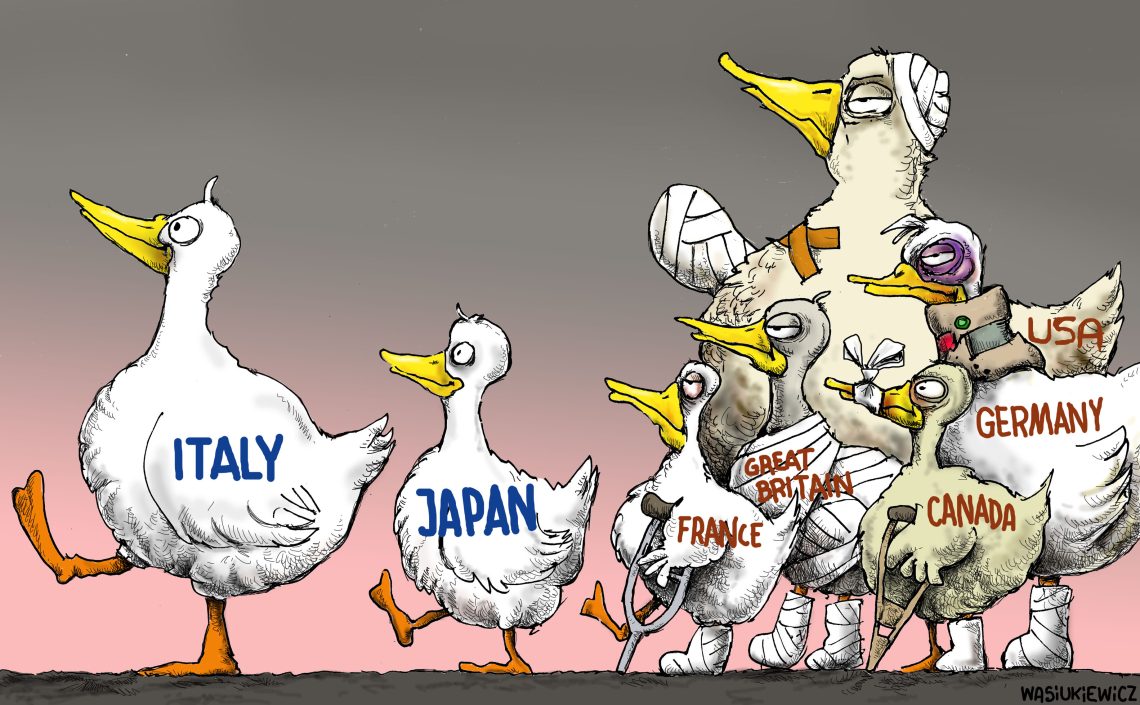Ending Syria’s tragedies
A terrible earthquake struck southeastern Turkey and Syria on February 6, killing at least 40,000 people as the search for victims goes on and casualties are sure to mount. Infrastructure, including thousands of homes, has been destroyed in many towns and villages.
Information on the disaster in Syria is more limited. Access for relief organizations and delivery of food and medicine is more difficult for political reasons in a fragmented country that has endured 13 years of civil war. The earthquake struck both areas controlled by the government in Damascus and the opposition. The international sanctions against the Syrian regime create additional limitations, as well as the initial desire of the Bashar al-Assad government to control aid operations. It is possible that some 20,000 people died in Syria alone.
Besides the territory under control by the Damascus government, an autonomous administration exists in northern and eastern parts of Syria, mainly an ethnic Kurdish area. There is also the Syrian Interim Government on the border with Turkey, under the protection of Ankara as an anti-terrorist buffer zone. The northwestern area of Idlib, an area also struck by the earthquake, is administered by the Syrian Salvation Government. The bordering Golan area is occupied by Israel while parts of the desert near the Jordan-Iraq border are occupied by the United States Army and some rebels.
The Syrian Civil War started with an uprising in 2011 during the so-called Arab Spring. The regime of President Assad reacted fiercely. Atrocities were committed. A clash of regional interests exacerbated the conflict, with Saudi Arabia supporting the rebels and Iran supporting the regime in Damascus.
Maybe the additional horror of the earthquake will make it possible to put all parties around a table without preconditions.
Then, in 2014, the Islamic State (also known as ISIS or Daesh) took over large parts of Iraq and Syria. The Americans initially had little success in expelling ISIS. Finally, a U.S.-supported coalition of Kurds and a Russian-supported Assad regime managed to defeat ISIS. From that U.S. alliance, an autonomous Kurdish region in northeastern Syria was installed. Unfortunately, it lent support to terrorism in Turkey, forcing President Recep Tayyip Erdogan’s military to intervene across the border.
The regime in Damascus used forbidden chemical weapons, crossing U.S. President Barack Obama’s declared red line. Mr. Obama did nothing to enforce the prohibition or to punish Mr. Assad’s use of such weapons. Russia gained strong influence, while the Donald Trump administration fired 59 Tomahawk missiles at a Syrian government-controlled air base in 2017. This had a deterring effect and the regime refrained from further use of banned chemical weapons.
The Syrian Civil War is still raging with no solution in sight. The U.S. and France insisted at the outset of negotiations that the Assad regime had to be removed. This was a cardinal sin. Peace negotiations with strong preconditions are likely to fail. Close to 600,000 people have been killed, seven million have been nationally displaced and more than six million have been forced to flee the country. And now Syrians face a natural catastrophe.
The world has unfortunately become accustomed to chronic war. Maybe the additional horror of the earthquake will make it possible for all parties to return to the table without preconditions and loss of face. There is already some movement. For humanitarian reasons, some sanctions are likely to be lifted. Now Damascus has opened some borders, allowing help to enter from Turkey. These are good signs.
A difficult issue is the request to put the regime in Damascus before the International Criminal Court for war crimes. This will stop President Assad and his entourage from entering negotiations. Resolving this dilemma will necessitate an assessment of values: is it more important to stop a war, save lives and allow the displaced to return on one side, or to punish crimes?
Syria is an artificial state created after World War I based on a division of interests between London and Paris. Is it necessary to stick to these borders imposed by outsiders? Certainly, more autonomous regions would bring advantages. The bad news for Syria is that a lot of external powers are exploiting their interests on Syrian territory. These problems require creative and open-minded solutions.
































